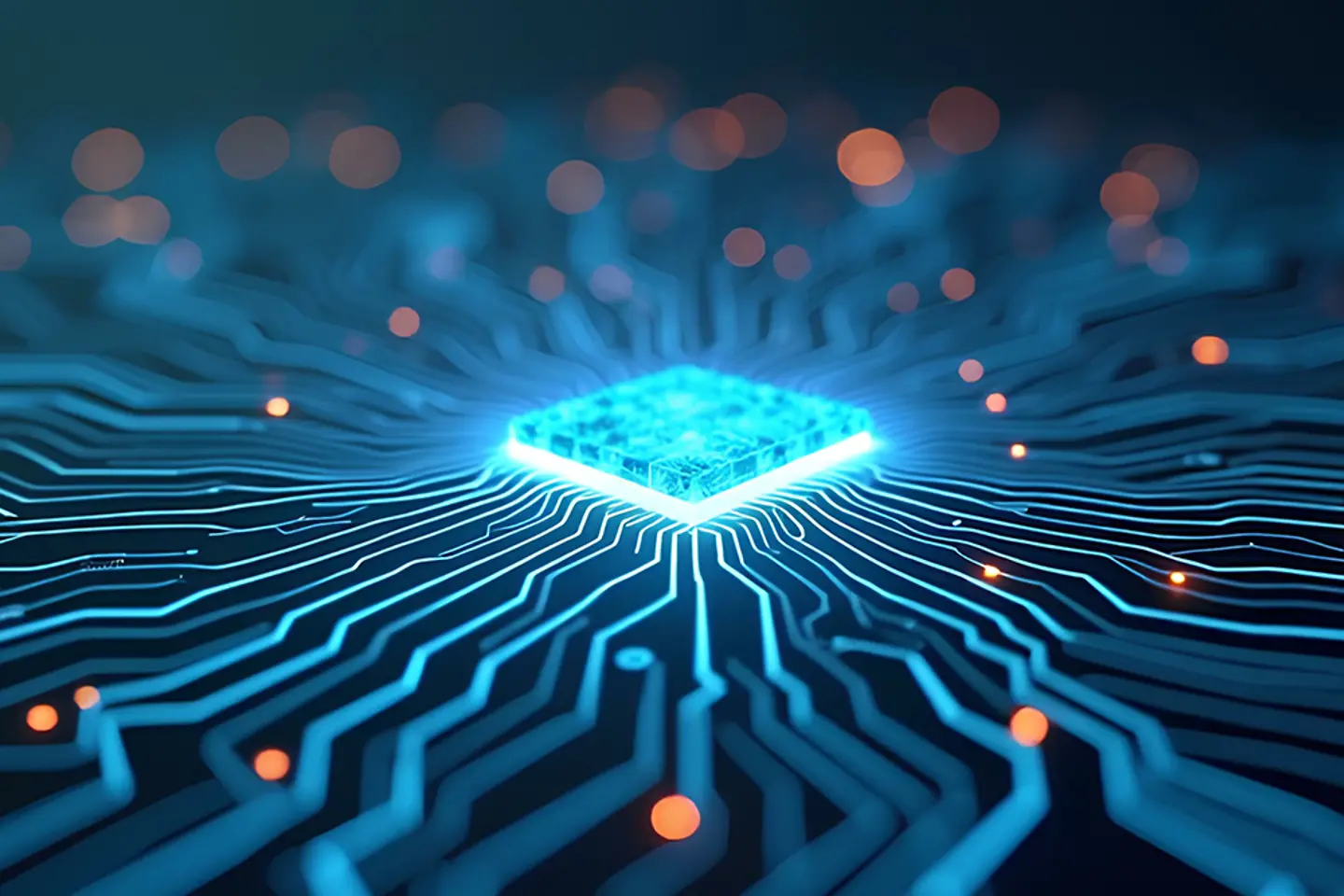
AI everywhere: Artificial intelligence is becoming a game changer. Period. But without graphics processing units (GPUs), the dream of a self-designed AI future remains a dream. This is because GPU resources in Europe are scarce, and this scarcity hinders the realization of large AI projects. So, how can Europe, nevertheless, set the course for the digital future?
Life is unfair. For decades, it was the gamers who faithfully bought the latest generation of graphics cards. Between "Can it run Crysis" (2007) and "The Witcher 3" (2022), games have repeatedly pushed the limits of graphics power. Who would have thought that gaming would one day grow into an economically relevant factor? In 2025, every business is suddenly calling for GPUs. Gamification with a difference, one might say.
Ever since ChatGPT entered the scene and triggered the AI boom, the global hunger for GPUs has grown immeasurably. GPUs are on the "menu" of AI start-ups as well as research institutes and established companies such as logistics providers, automotive manufacturers, and production companies. GPU usage is growing rapidly at an annual rate of 20 to 30 percent1. This GPU hunger results from cloud rendering and real-time visualization. In addition, digital twins, simulations, and autonomous systems generate GPU demand. But the big GPU "burners" are AI projects. The training of GPT-4 is said to have required over 25,000 A100 GPUs over a period of months – the equivalent of billions of GPU hours1.
In the AI world, the mix of many large and small projects is the main reason for the high GPU load. On the one hand, there are initiatives to develop specialized generative AI (GenAI) models beyond generic ones such as GPT. Lawyer LLMs or doctor LLMs are conceivable, for example. They require millions of GPU hours for training. Or the training of classic machine learning models, e.g., for classification problems or recommendation systems, as we know them from Amazon, Spotify, and others.

On the other hand, there are many small projects that generate inference load. Existing models are enhanced with industry expertise, e.g., using retrieval augmented generation (RAG). Inference also increases immensely with increasingly complex systems, use cases, or workflows. One example of this is the well-known ChatGPT: this is no longer a pure LLM, but an agent-based system with reasoning. Reasoning sometimes leads to 10 to 20 times the number of tokens. Other multi-modal or vision models generate a significantly higher inference load than pure language models.
The trend towards "physical AI" is currently driving developments in the AI environment. Here, "things" such as robots, cars, or electronic devices are enriched with GenAI so that they have to link concepts across the boundaries of modality. This means that they must understand language as well as evaluate camera or sensor data and put it into context. They also need to be aware of their own capabilities and understand which actions have which results to be able to solve complex tasks independently. Smart robots can open a wealth of new possibilities in areas such as flexible production. But such mobile, intelligent robots could also soon become part of everyday life in care and service–wherever there is a shortage of workers. A world is emerging in which science fiction becomes reality.
For Klaus Werner, Managing Director of Deutsche Telekom's Business Customers division, "AI is the currency of the future". In other words, companies that fail to tap into the potential of AI will fall behind the competition. Conversely, this means that GPUs will become a success factor for entire economies. As a result, analysts at ResearchANDMarkets expect the global market for GPUs in data centers alone to grow from USD 97 billion (2024) to USD 228 billion (2030). The annual growth of just under 14 percent represents a rather conservative estimate. Or is the forecast just an expression of an exaggerated marketing hype? Not at all. As a provider of an own cloud, the Open Telekom Cloud, we can confirm the high demand for GPUs from our own experience.
Today, IT resources are no longer just IT resources – they are a geopolitical component. A factor that determines global competitiveness. The EU has recognized the strategic importance of AI and launched the AI Gigafactory program2. It plans to build up to five European gigafactories, each with 100,000 GPUs per site. The EU alone wants to invest 20 billion euros. The companies involved will contribute further funds, so that the real investment will be significantly higher. The goal: greater independence and the possibility of large models "made in Europe". The problem: Europe in particular does not have the chip capacities to advance AI on a large scale. But now there is movement in the European initiative.
Together with world leader in Artificial Intelligence Computing NVIDIA, Deutsche Telekom is now building the first industrial AI cloud for European companies on German soil. NVIDIA is providing 10,000 high-performance processors for this purpose. T-Systems is operating the hardware in its secure data centers. The new AI cloud, which is set to be used by the first customers by 2026 at the latest, will offer European manufacturers sovereign access to state-of-the-art technologies for design, simulation, and production.
The funds from the European funding program will not be allocated until 2026. This means that the first gigafactories will not be operational until 2027 at the earliest. Deutsche Telekom does not want to wait that long and is already starting now, in 2025, becoming an AI trailblazer by building the first European AI bridgehead. The initiative with NVIDIA is aiming to become part of the European AI Gigafactories to come in the next few years.

This initiative sustainably strengthens the competitiveness of Germany as an industrial location and of Europe as a whole. We are sending a clear signal for Europe's technological independence. Our goal is a secure, high-performance AI infrastructure that is committed to European values and enables innovation for our industry.
Ferri Abolhassan, CEO of T-Systems and Deutsche Telekom Board Member
The AI factory in Germany relies on the latest technology from GPU market leader NVIDIA: the 10,000 Blackwell GPUs of the innovative Blackwell architecture are provided as NVIDIA DGX B200 systems and NVIDIA RTX PRO servers – including NVIDIA networking and AI software. NVIDIA DGX™ B200 offers eight NVIDIA Blackwell GPUs connected via fifth-generation NVIDIA® NVLink™. According to NVIDIA, this increases training performance by a factor of three and inference performance by a factor of 15 compared to previous generation systems.
NVIDIA RTX PRO™ servers enable the creation of AI factories. They are suitable for AI, but the main field of application is 3D visualization, graphics, video, rendering, especially ray tracing. Ray tracing for the creation of realistic light and shadow effects is particularly important for digital twin simulations or metaverse platforms. At the same time, the architecture aims to achieve high energy efficiency – a key issue that must not go unnoticed in the wake of the AI hype.
T-Systems is the first European provider to provide large amounts of GPU power at its disposal. The GPU capacities are provided in a cloud model from the existing T Cloud platforms (GPU as a Service). This means that companies always have access to the resources and can use GPUs as and when they need them – without any investment costs. This significantly lowers the entry threshold for GPU use.
The availability of GPUs is a critical factor for the future of Europe. Many new business models, and AI in particular, are heavily dependent on unrestricted access to GPUs. With Deutsche Telekom's initiative, GPUs will be available on demand from the T Cloud on a large scale – and with sovereignty. The foundation for Europe's future digital competitiveness is being laid.
1 Global data center – GPU Market, Grand view research, 2024, website
2 If Europe builds gigafactories will an ai industry come?, Reuters, 2025, website